Appeals from the BSGA (British Sign and Graphics Association) for a meeting to clarify the safeguarding requirements for CNC Routers used in the sign industry have been rejected by the HSE (Health and Safety Executive) who have stated that “the law on this issue is clear”.
However, the BSGA believes that in this instance, the HSE is wrong and is being unfair to sign makers who purchased CE marked routers in good faith.
The problem came to light following an unannounced visit to a sign maker by an HSE Inspector who issued an enforcement notice because the inspector considered the company’s router did not have adequate safeguarding, even though the machine was CE marked. The business had to pay an HSE fee and also suffered disruption and the additional costs associated with installing the extra safeguarding demanded. Since then other sign businesses have been similarly affected.
“What the BSGA and our members don’t understand is why the Inspector decided to issue the notice when the machine in question carried the CE mark,” said David Catanach, Director of the BSGA. “None of the built-in safety features had been by-passed, tampered with or disengaged.
“Our view, which is echoed by our expert advisors, is that, with the CE mark, the machine conformed to the relevant British Standard BS EN 849-3:2012 Safety of Woodworking Machines and did not warrant any further safety equipment.
“We wanted to sit down with HSE to discover why, if a product complies with and earns a CE mark, HSE Inspectors are issuing Enforcement Notices.”
HSE rejected the proposed meeting but in a written reply stated ‘The CE mark is not a quality mark and in the Inspector’s view the machine did not comply with the relevant standard or HSE Guidance’.
“They are patently wrong,” said Catanach. “The CE mark is a safety mark and is intended to confirm that a product complies with all relevant European safety standards. Why else is it there?
“To receive a CE mark a manufacturer must meet and document all the necessary requirements and produce a Declaration of Conformity as a safeguard against products not meeting safety standards or regulations.
“In this case, HSE seem to be applying additional standards over and above the British and European ones”.
He went on to say that the BSGA has a deep respect for the work of the HSE. “But we believe in this instance they are wrong and the problem is exacerbated by the fact that there is great inconsistency in the application of this practice across the country leading to speculation amongst some that sign companies are ‘easy pickings’ for some inspectors.
The BSGA will continue to lobby the HSE, but because they have so far refused to engage with the Association,the advice to BSGA members who already own and operate CNC Routers is to read and consider the implications of both the HSE Enforcement Policy Statement and its WIS (Woodworking Information Sheet) 22 covering safe use of routers (both available to members on the BSGA website).
“It may mean sign makers have to make changes and incur additional costs, but until the HSE is prepared to engage and work with the industry like they used to when we had a balanced approach from experienced inspectors, it seems there is little else we can do.”
Purchasers of new routing machines should be safe. “Manufacturers and sellers of routing equipment are now well aware of the HSE stance and are including or offering additional safeguarding, ranging from pressure mats and guard rails to light beams, on all new machines” says Catanach. “However, the onus is still on the purchaser to ensure that both equipment and how they use it meets the standards”.




 European Sign Federation
European Sign Federation